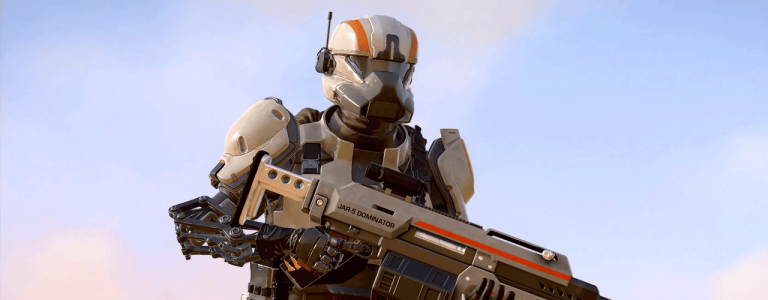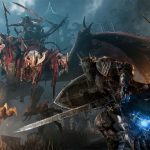At this point, Genshin Impact and Honkai: Star Rail have firmly created the expectation that when developer HoYoverse sets out to make a new game, it’s going to be both like and completely unlike what it has done before. Fans of the studio’s games will know how getting new characters and eventually building them will work (different names, same structure), but the action and tone vary quite significantly. This is once again true for Zenless Zone Zero, HoYoverse’s next project that swaps out its larger sandboxes for stylish streets with even more stylish characters and flashy action combat.
I played Zenless Zone Zero (ZZZ) for the first time briefly in its second closed beta test, and again for about four hours at a media event hosted by the studio. The long and short of it is that in my brief time with it, I feel that ZZZ is the most “mobile game” of HoYo’s most recent releases. I don’t mean that in a bad way; what I mean is that almost everything can be done in quick encounters – think 15 minutes or less. Whether you’re diving into a story beat, a character quest, or just completing side activities, ZZZ seems to take a bite-sized experience approach to most things it offers. Not that some don’t go longer (and I didn’t have a chance to play everything, after all), but that seemed about the average.
What I like about that is that while I can see myself spending hours helping complete missions for folks around the city of New Eridu or taking on repeatable combat challenges on PS5 or PC, it’ll be just as easy to sneak in a few activities on my phone in between other obligations. And based on how much fun I had during my playtime, I know I’ll certainly want to when ZZZ is out soon on July 4.
A Colorful Apocalypse
In ZZZ, the apocalypse struck with the appearance of expanding, dangerous bubble realms known as Hollows. The space-warping zones are filled with dangerous creatures that can afflict humans with a deadly disease that may just kill them or, worse, transform them into monsters. Rather than relocate far away from these Hollows, the citizens of the city New Eridu have developed tools to explore them for treasures and resources.
While I can’t speak to how interesting ZZZ’s story is, as I was thrown into the game at a point where the chapters had already been completed (replaying the campaign missions was something I could seek out, but I opted to explore other challenges), I do already appreciate ZZZ’s tone. It’s incredibly goofy. For instance, while roaming around a construction site I found a Bangoo (small helper robots that fulfill all sorts of roles in New Eridu), Catloverboo, lovingly watching over a cat that was burying its business in a pile of sand. When I asked the Bangboo what the heck it was doing, it went on and on about how nice cat paws smell, and sharing in its enthusiasm got me a few resource rewards.
Delightfully, that goofiness persisted. From misunderstood affection causing multiple characters to be flustered by a robot-lover’s advances at robots to cheeky text messages from other characters, ZZZ’s lighthearted tone creates a welcoming atmosphere. It’s as though the people of New Eridu’s attitudes reflect the city’s fun and vibrant design rather than the collapse of society at large.
It’s a Team Effort
Zenless Zone Zero’s playable characters are divided in an interesting way. The protagonist siblings Belle and Wise are “Proxies,” individuals who have the technology and know-how to direct others in navigating the winding paths in Hollows. They don’t go in physically themselves and instead guide Agents on their dives into the dangerous realms. One selected sibling is playable during city exploration while the Agents are playable in Hollows. The 15 currently playable Agents are split among various factions often associated with their jobs, from groups like a housekeeping company to a construction company.
Whether diving into combat from the campaign, a side quest, or by choosing to run through one of the many various combat challenge modes, three Agents and (depending on the situation, though it wasn’t clear to me when they were or weren’t allowed) a combat Bangoo make up a team. Like with other HoYoverse games, team composition is critical. Every character has a combat specialty type (like defense, stun, or attack, among others) and a damage affinity (like physical, fire, or ether), both of which need to be taken into consideration when building a team, especially for more difficult encounters like boss challenges. Pairing at least more than one member from the same faction on the team awards each of those characters an extra ability too.
I like that the Bangboo, which acts independently of the playable team and attacks on their own, can fill in for a damage type if you don’t have a particular character ready to take on that role or don’t want to swap any one of your favorite characters out. I spent a lot of time using members of the Belobog Heavy Industries and lacked a character that could build up an ether debuff on enemies, so I trained up the one Bangboo in my arsenal that did use ether attacks to help out and it worked remarkably well. Though ZZZ isn’t focused on elemental combinations like Genshin Impact, considering affinities and enemy weaknesses still matters.
The combat itself is a ton of fun, and I appreciate that certain encounters have a regular difficulty and a hard difficulty for players looking for extra challenge. Encounters take place in dungeon-like areas that seem to be procedurally generated and in most situations, you can’t revive a character on a team once they’ve fallen. Engagements are flashy and fluid; players can hack-and-slash their way through, but those who take time to learn attack combos and make use of the dodge counters and the chain attack will see their efforts rewarded. Plus, it’s fun to learn how to optimize a team’s combat.
Switching characters at just the right time can lead to a special follow-up attack, and ZZZ helps players learn this by initiating a callout on the side of the screen. The aforementioned dodge counters award, as noted in the game, “a brief moment of invulnerability and deals high damage and interrupts the target.” This too is signaled well with colored flash and specific noise before an enemy attacks, making what could be perceived as complex combat rather learnable for anyone getting into more intense action games for the first time. Getting the hang of these plus executing other combos makes the combat delightfully hypnotic.
It’s not only the basic mechanics that need to be learned; each character’s playstyle was different too. For instance, The Belobog Heavy Industries crew has a great bear character, Ben, whose dodge is a pitiful scoot to the side and a shuffle forward for his sprint, so learning how to swap him in and out at the right time was essential for fights that required faster movement. I look forward to getting to see which characters pair best together, regardless of the group they’re from.
The Other Half of Exploring Hollows
When I first played ZZZ I was most surprised by its Hollow Deep Dive System, the other part of combat exploration that doesn’t really have all that much combat involved. Rather than navigating repeating combat paths, ZZZ pulls players back a layer into what could be considered an imagined top-down view of the Hollow represented through TVs on a board (as shown below). Here, additional combat encounters can be found along with navigation puzzles and rewards on hidden paths.
This view most clearly represents the Proxy’s perspective of the Hollows. Paths unseen by the Agents on the ground, but easy to navigate for those beyond. This board system is intertwined with combat in the campaign. For players who don’t favor it and just want to get into the action, though, there are specific “Combat” and “Exploration” divisions at the Hollow Deep Dive menu that separate missions based on the kind of experience players will have, with the Exploration selection filled with the Hollow TV board.
When I played a random puzzle mission listed in the Exploration section, I was disappointed with how easy it was. In fact, in one mission the memory puzzle was solved for me. I hope these were one-off instances and not representative of the Hollow Deep Dive exploration system as a whole. If there’s no challenge to navigating these boards, then what’s the point of having them?
Character dialogue is another issue in the Hollow Deep Dive exploration. Maybe it’s not so bad on a mobile device or other small screen, but all dialogue boxes in this mode are relegated to the top right corner of the screen. On a regular PC screen, it was easy to miss when dialogue started and awkward to pay attention to longer conversation points. Given that these “exploration” boards are part of the campaign, it makes me worried that I’ll miss out on lore or good conversations between characters. Overall, though, I think the board system could add an interesting mix to ZZZ’s gameplay, but I do hope it poses more of a challenge.
Walking the Streets of New Eridu
Exploring New Eridu is limited. ZZZ isn’t an open-world game and it doesn’t pretend to be. Instead, players can explore multiple streets connected by an in-game menu. Once at the chosen destination, running through the entirety of a street and its side paths doesn’t take long at all, though I found quite a number of people to talk to and various activities to do. Many of the NPC shop owners have stellar designs and I was delighted to see that playable characters can be freely found around the city for conversations and side quests.
An important exploration aspect of ZZZ is its in-game clock. Days are split into four segments; morning, afternoon, night, and late night. As the time of day changes so do the city streets, making certain individuals unavailable at a time of day. As far as I could tell, the most meaningful changes at a particular time of day on a specific street are shown in an easy-to-access clock menu, so I wasn’t at risk of missing anything too critical. According to the in-game handbook, things like completing story and side mission tasks and resting advance time rather than your real clock. I’m curious to see how this mechanic plays out in the long term, but in my playtime, it only mattered to me when scheduling a meetup with an NPC for a side quest and for opening the video shop.
There are plenty of other activities other than digging into combat, like running the protagonists’ video shop. This is more of a quick optional task to kick up at the beginning of each day where you’re asked to stock three tapes based on customer genre preferences. The better your choices, the better the revenue. More videotapes are acquired through exploring, side missions, and running the shop. Once a promoter is selected to run the shop for the day (new promoters can be hired too), you let them do the work, though you can also interact with customers throughout the day while the shop is open. This is just one of the few fun side activities I found that enrich the time of being in New Eridu.
Other activities included things like minigames in the arcade (anyone up for competitive Snake?) and helping the street-based Officer Mewmew with his list of side missions for residents of the street. There are also functional activities like grabbing a daily coffee (in-game daily, not actual daily) from the cute coffee shop for buffs and a refill on rechargeable energy used for specific combat encounters to earn materials for character upgrades. While New Eridu might not be sprawling now, it’s easy to see how HoYoverse can expand the city with new streets, shops, activities, and characters in the future.
Miranda Sanchez is the executive editor of guides at IGN. She’s a Shenhe main in Genshin Impact and a big fan of stationery and fountain pens. You can sometimes find her on Twitter/X.
























